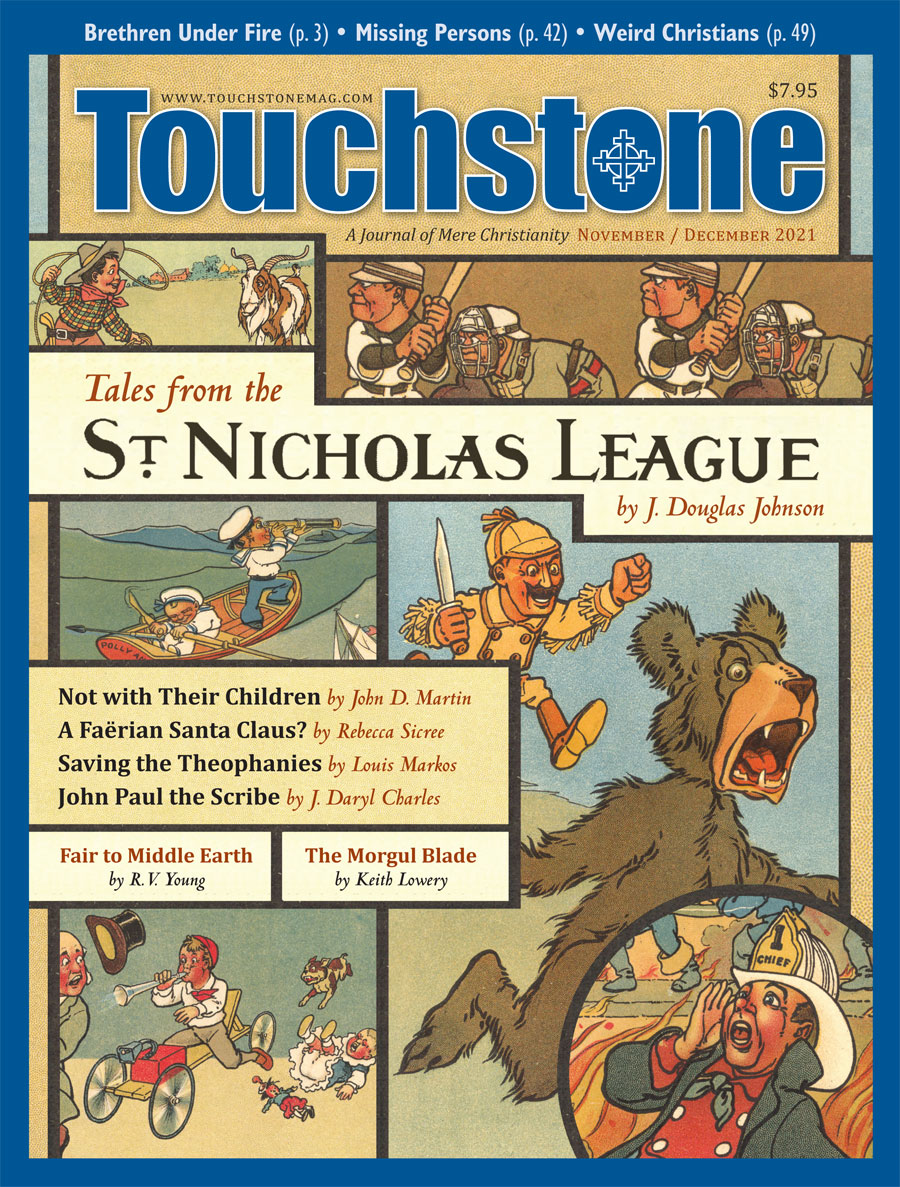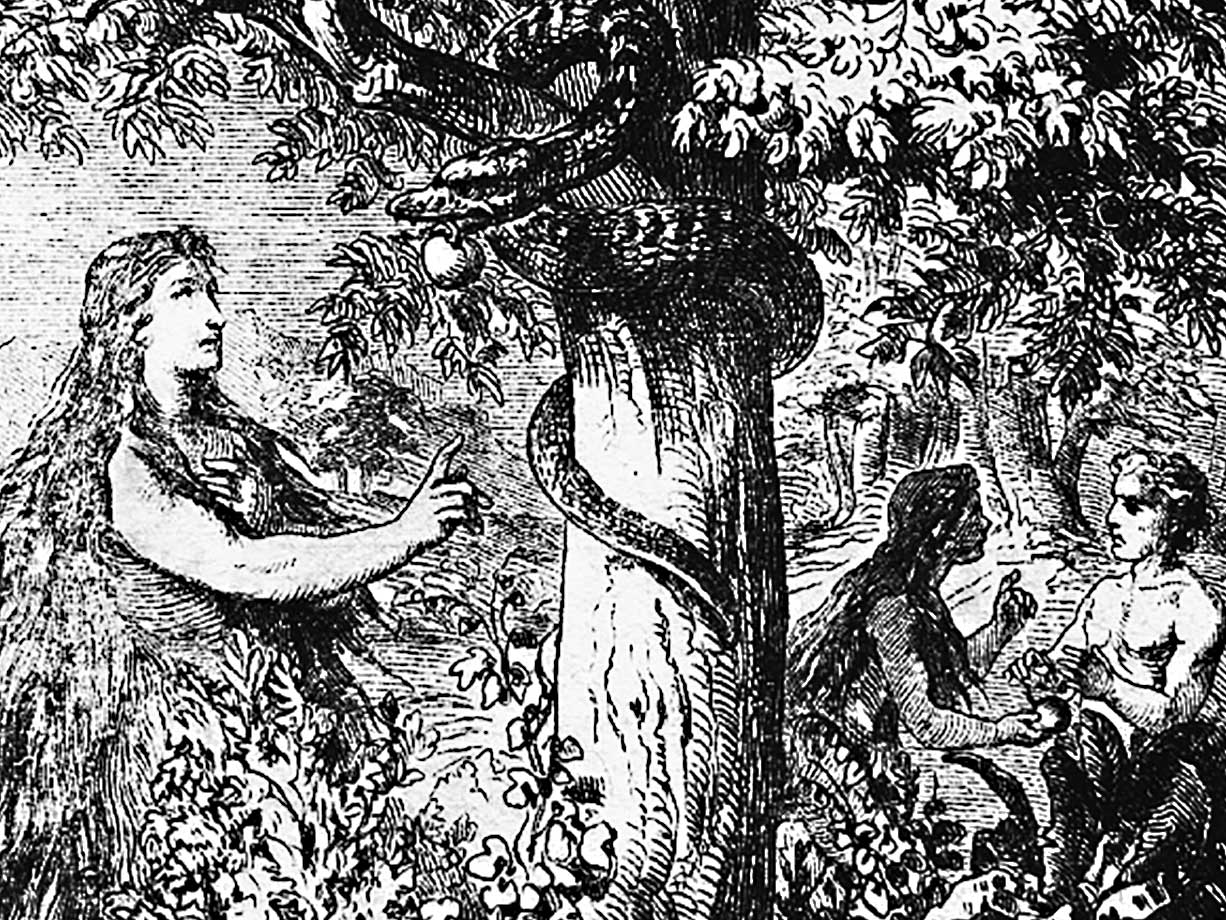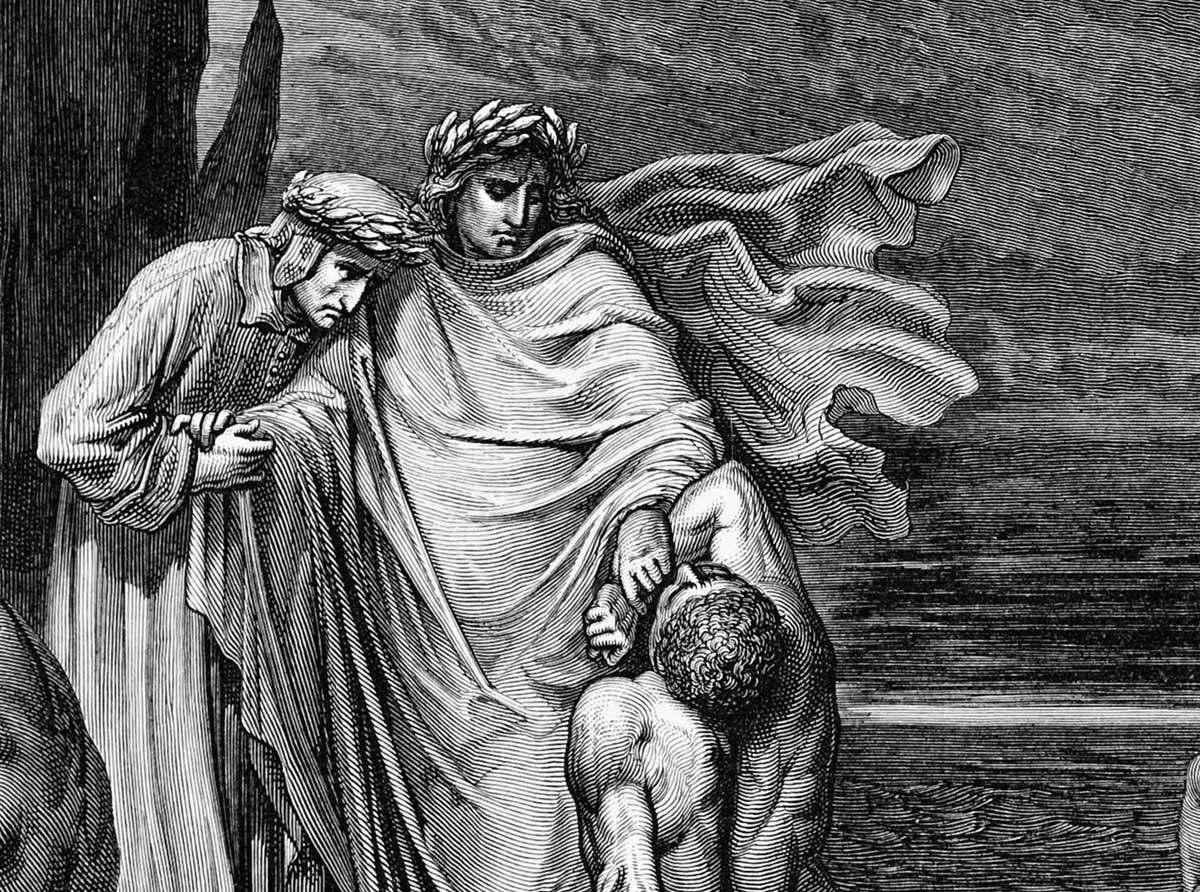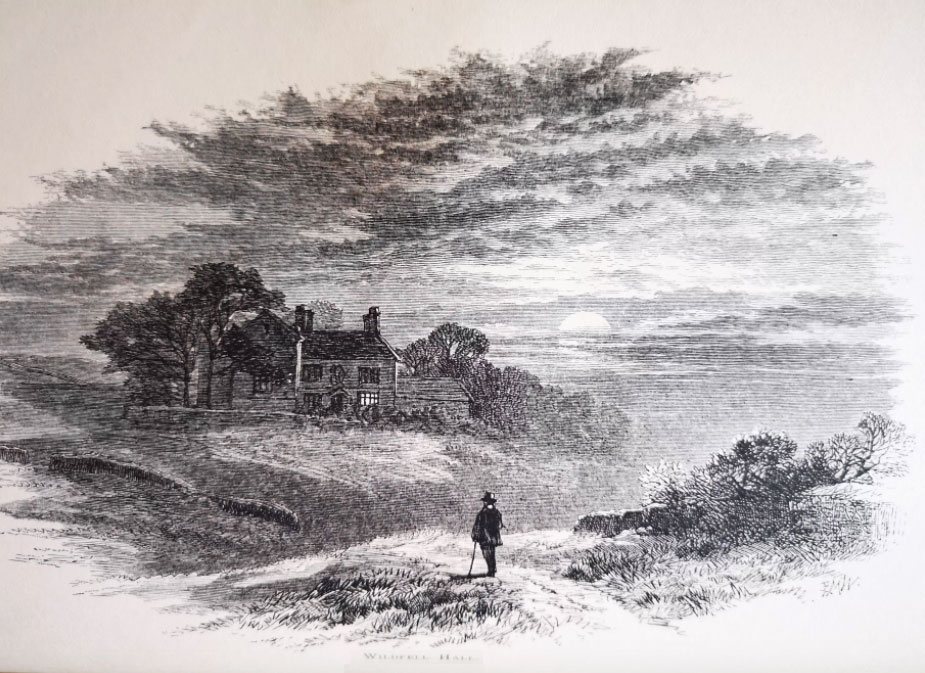Not the Best Case
Paradise and Utopia: The Rise and Fall of What the West Once Was
Vol. I: The Age of Paradise: Christendom from Pentecost to the First Millennium;
Vol. II: The Age of Division: Christendom from the Great Schism to the Protestant Reformation
by John Strickland
In September 1303, French knights, at the behest of Philip IV of France, kidnapped Pope Boniface VIII, hoping to bring the pontiff to France, where he was to be humiliated and degraded. The attempt succeeded briefly, but the people of Anagni (the papal summer residence) rescued the aged pope, and quickly put the French to flight. Boniface VIII died a month later.
Many historians treated the "outrage of Anagni" as the match to a long fuse that exploded in Wittenberg in 1517. They cast this episode as signifying the weakening of the papacy, its submission to French interests, the beginning of the Avignon corruption, and the summoning of Wycliffe and Hus, and finally Herr Doktor Luther. Yet the complexity of history eventually pressed this interpretation, like so many other grand narratives, into the marginalia of historiography.
But the idea of grand narratives dies hard, as these vehicles serve the purpose of organizing historical events into a coherent, understandable story. All too frequently, however, confessional and ideological assumptions color the narratives of the past.
This is not to discount grand narratives whole cloth. Sir Richard W. Southern asserted that the historian's duty demanded that he produce works both intellectually and aesthetically pleasing, as history, he asserted, was indeed an art. Making sense of history as something other than "just one . . . thing after another" is part of the historian's vocation, artfully linking cause to effect to cause through the rhetoric of narration.
Consequently, history, inchoate and shambolic, is best understood in very small bites. Yet this should not stop us from looking for large movements over time, such as constitutional or institutional history. But in order to describe history's march, the narrative needs to arise in conjunction with the facts, even though it must be admitted that we historians frequently come to the facts with our intellectual baggage in tow. It's all quite the balancing act.
When this reality touches church history, it presses on us our Christian duty to keep in mind Lord Acton's words: "We are not sure we are right until we have made the best case possible for those who are wrong."
The Church's Whole Past
With these concerns in mind, I turn to two volumes by Fr. John Strickland, the first two of four proposed works on the history of the Church: Paradise and Utopia: The Rise and Fall of What the West Once Was, Volumes I and II.
Fr. Strickland, who holds a Ph.D. in modern European history, has previously published on church history, namely, The Making of Holy Russia (2013). With these volumes, however, he seeks to comprehend the Church's whole past, both the Orthodox East and the Latin West, situating all into a narrative that, on the one hand, depicts Orthodoxy's faithfulness to the Church's apostolic vision, while, on the other, showing the Latin West, both Protestant and Catholic, aberrant and decadent. He crafts his tale with numerous exempla. Fr. Strickland's quick and lucid prose takes the reader in these volumes from the apostolic Church up through the English Civil War. There is much here to commend, as he includes items generally available only in more technical histories and journals.
The grand prism through which Fr. Strickland sets his narrative—that the Church, both East and West, sought the creation of a paradisiacal culture, one centered on the transfigurational life of Christ that is acquired through life in the Church—offers to the reader a recurring mooring for the text, a repeated refrain that is the focus of the narrative. For Fr. Strickland, the gospel of the early Church was a proclamation that the Savior had come not just to restore fallen Adam to his former self in Eden, but to transform him and his progeny through a life in Christ, ending in a life in the Trinity in the Paradise of God.
All of this, to this reader, is excellent. Nonetheless, these volumes fall short of their intended end as histories for two interrelated reasons: first, Fr. Strickland shows a shallow understanding of the Latin West, and second (perhaps because of the first), he frequently twists and abuses Latin thinkers and thought. A few instances must suffice here to illustrate these two points.
Failures & Inversions
Fr. Strickland's lack of depth and breadth in treating the West doubtless can be linked to his neglect of many important historical texts. And too often the few that he does use are dated (superseded sometimes by their own authors) or treat matters in the obverse of the intended purpose.
For instance, Fr. Strickland inverts the episode involving Anselm's master Lanfranc in his disputation with Berengar of Tours over the mystery of Christ's presence in the Eucharist. Fr. Strickland positions the debate in the context of Anselm's championing of logic over mystery (more on this below) and how this was presaged in the eleventh-century Eucharistic dispute. Fr. Strickland maintains that Lanfranc used logic to make his point about the distinction between "substance" and "accidents" in the Eucharist, relying for these distinctions on Aristotle. Fr. Strickland ends his discussion on the matter by saying that it resulted in the word "transubstantiation" entering the Latin theological vocabulary.
Yet not Lanfranc but Berengar used dialectics to show that the substance of bread remains in the Eucharist, and that to it is added the substance of the risen Christ. Lanfranc objected to this, declining not from the use of reason per se, but its application to our understanding of the mysteries. Lanfranc repudiated the use of reason in matters of faith, explicitly claiming he'd rather be a poor beggar holding to the bare words of Scripture than depend upon reason to bolster his faith.
The episode of Lanfranc and Berengar speaks to Fr. Strickland's poverty of sources, as his information for this, linked in a footnote, is Prof. John Baldwin's The Scholastic Culture of the Middle Ages, an introductory book of scarcely 120 pages wherein the Berengar controversy is but a minor episode. Baldwin seemingly had not read Lanfranc's De corpore et sanguine Domini, for Lanfranc never used the word "accidents" in it. By contrast, the Anglo-Catholic Oxford don H. E. J. Cowdrey authored a fine study of Lanfranc that points out that Berengar was the dialectician, a point for which Lanfranc attacked him. Lastly, the word "transubstantiation" first appeared in 1167, not in the mid-eleventh century.
In Fr. Strickland's long discussion of the eleventh-century Gregorian Reforms (a discussion innocent of the chief texts and sources that treat this period) he mentions Cowdrey's excellent study Gregory VII (the Gregory of the Gregorian Reforms) but leaves completely untouched two other works of Cowdrey, The Age of Abbot Desiderius: Monte Cassino, the Papacy, and the Normans and The Cluniacs and the Gregorian Reform, which would have aided his understanding of the Gregorians' undulating relationship to the Normans, and their underlying notion of liberty garnered from the Cluniacs.
Further, as regards the abuse of Latin positions, Fr. Strickland completely stands Anselm's Credo ut intelligam ("I believe that I might understand") on its head, saying that by it Anselm repudiated St. Augustine's fides quaerens intellectum ("faith seeking understanding"), Anselm seeing understanding arrived at by reason, with faith, as it were, reason's handmaid. But Anselm took this phrase directly from St. Augustine, who put it in the imperative, Crede, ut intelligas! "Believe that you may understand!" (Tractate on John's Gospel, 29.6). Indeed, Anselm's original title for his Proslogium was to be Fides quaerens intellectum.
Beyond this, Fr. Strickland takes Anselm's dialectical enterprise in the Proslogium (and we could couple this with Cur Deus homo) as normative for his outlook, that reason, and not faith and revelation, brings us superior knowledge. This does an immense disservice to Anselm's sermons, his hymns and prayers to our Lady, and his works on scriptural exegesis. But more importantly, it completely reads over Anselm's own assertions that the God he discusses, the one the fool says does not exist, is the God of revelation, and that his demonstrations are aimed at the fool, showing him why he is a fool to reject the existence of God.
Errors & Details
At another point, Fr. Strickland critiques the Vulgate and St. Augustine for using the words reformatio (and reformo, reformare) to translate the Greek metamorphosis (both verb and noun) in, for example, Romans 12:2. But these words were used to translate metamorphosis before the Vulgate and St. Augustine, by, for example, Tertullian and St. Hilary of Poitiers (who also uses transformo as a translation of it). Further, the Latin verb reformo, -are means to transform or metamorphose. Recourse to an online dictionary, such as the Lewis and Short lexicon at The Perseus Project, would have shown this. Moreover, reformo, -are was the word used by Ovid in his Metamorphoses to discuss, for instance, Thetis's transformation from one creature to another in her attempts to avoid Peleus's amorous advances (from which was born Achilles). Through this misreading, Fr. Strickland indicts St. Augustine's use of reformare as abandoning the Church's transfigurational paradigm of human salvation, but reformare means exactly that.
Fr. Strickland's interpretation of Thomas Aquinas—that Thomas saw reason as a distinct faculty that operates outside the realm of grace and brings us to certainties apart from faith—demands extensive revision. No one disputes that Catholic theologians taught this as a form of Thomism, going back to Denis the Carthusian and Thomas di Vio, Cardinal Cajetan, in the fifteenth and sixteenth centuries. But no one can read twentieth-century Catholic thought without soon realizing that this reading of Thomas needs radical revision. This was the gist of the work of both Henri Cardinal de Lubac and Fr. Jean Daniélou in the bulk of their immense oeuvre—that grace and nature, far from being at odds, worked symbiotically in our natural pursuit of God. Granted, de Lubac's thought was modified, even by him, and it is still debated, but such a reading of Thomism as Fr. Strickland gives does not approximate the current state of the question.
Fr. Strickland glides all too quickly over the Renaissance, equating Renaissance humanism with its modern atheistic iterations, as he accuses Petrarch of looking to pagandom as an alternative to late medieval Latin Christendom. Were anyone, however, to read such humanists as Petrarch, Coluccio Salutati, and others, he would find himself face-to-face with people asserting the very things Fr. Strickland champions in the first part of his books. They saw nature as a gracious revelation of divine love. For Petrarch, the human soul, the imago Dei, was the prism through which we understand creation. This idea was a commonplace for later humanists.
In Fr. Strickland's telling, the Renaissance's decadent turn to paganism rejected the glories of the true Christendom in Byzantium. Fr. Strickland eschews the term "medieval," seeing it as a Renaissance slap in the face of Byzantium. First, the term at its origin in the Renaissance (adumbrated in Petrarch and first used formally by Biondi) had nothing to do with Byzantium, but only with the perceived inept Latin skills of medieval writers. For Petrarch, recourse to the ancient world was a return to the masters of eloquence; the discipline of humanism first and foremost sought a restoration of rhetoric as the crown of the trivium.
The slogan ad fontes (to the sources), for the humanists, meant finding the eloquent writers as guides, which for them were St. Augustine alongside Cicero and Virgil. In this admiration for the eloquence of the pagans, humanists were only echoing St. Augustine's "plundering the Egyptians," a sentiment clearly embraced by the Greek East as well, for instance, the Church's use of Homer to teach poetry.
These instances of failing to make the best possible case for those Fr. Strickland criticizes is sadly coupled with myriad mistakes in historical details. A few things that Fr. Strickland gets wrong: that Abelard studied under Anselm of Canterbury (it was Anselm of Laon); that Italian cardinals elected Urban VI in 1378, to the chagrin of the French cardinals (the French cardinals elected him); that conciliarism was a product of the Council of Constance (it preceded and produced the council); that The Imitation of Christ was first written in the vernacular (it was written in Latin); that Luther nailed his 95 theses to the Wittenberg Castle Church door on October 31, 1517 (a long-forsaken fiction); that Luther labeled his Eucharistic doctrine "consubstantiation" (he never used, and Lutherans avoid, that word); that the name "Protestant" comes from the Reformers protesting certain Roman Catholic doctrines (it comes from Lutheran princes protesting the removal of imperial liberties at the Diet of Speyer in 1529); and that Wolsey was the Archbishop of Canterbury whom Henry VIII sent to Rome to get him his divorce from Catherine of Aragon (he was Archbishop of York and never left England).
Cross or Transfiguration?
Lastly, Fr. Strickland makes a rather odd, at least to me, theological distinction, mentioned previously, that the Latin Catholics rejected a transfigurational model of human salvation only to embrace a "stavrocentric" or Cross-centered model. I do not deny a strong emphasis upon the Cross in Anselm's prayers and meditations, and we need only think of Bach's use of St. Bernard's hymn Salve, caput, cruentatum or the refrains in his St. Matthew Passion ("O Sacred Head sore wounded") to get a glimpse of this throughout Western piety. Rather, I find this odd given the overwhelming emphasis on the Cross in Orthodox piety, prayers, and liturgical texts. Concluding the reading of the Matins Gospel we hear, "Thy cross do we adore . . . for lo, through the cross is joy come into all the world." On Great and Holy Thursday
we sing:
Today he who hung the earth upon the waters is hung upon a Tree; he who is King of the Angels is arrayed in a crown of thorns. He who wraps the heaven in clouds is wrapped in mocking purple. He who freed Adam in the Jordan receives a blow on the face. The Bridegroom of the Church is transfixed with nails. The Son of the Virgin is pierced by a lance.
Is there a difference of emphasis between Greek East and Latin West? Perhaps, but this hardly seems a matter that defines our differences. Indeed, one of the leading English-speaking Catholic theologians, Fr. Aidan Nichols, OP, writes that life in Christ is "a transfiguration of natural ethics into the form of the crucified yet glorious humanity of the Son of God, who is himself the New Adam, the remaking of the human race" (The Chalice of God, Liturgical Press, 2012).
Sadly, I found no acknowledgment by Fr. Strickland of any current scholars who had read and corrected either volume of his text. I think this an oversight on his part, and I would hope that the future volumes will have other eyes to help remedy whatever shortcomings they have.
In the end, Fr. Strickland has attempted a worthy thing, to place into the hands of English-speaking Orthodox an interpretive narrative that situates us in the calamity that is the modern, decadent West. It is certainly sorely needed. But however capable Fr. Strickland is as a historian of modern Russia, he was out of his element in the periods these two volumes cover. One can take away from them much that is profitable, but also much that is simply wrong.
Many things separate the Orthodox from Catholics and Protestants, and while Fr. Strickland treats the filioque controversy well, for an Orthodox to make an argument against those with whom we disagree on the basis of a fictional case, and not their best case, does not speak well about what it is we Orthodox claim to be defending.
Gary Jenkins Ph.D., is the Van Gordon Professor in History (retired) at Eastern University in Pennsylvania, and the current director of the St. Basil Center for Orthodox Thought and Culture (also at EU).
subscription options
Order
Print/Online Subscription

Get six issues (one year) of Touchstone PLUS full online access including pdf downloads for only $39.95. That's only $3.34 per month!
Order
Online Only
Subscription

Get a one-year full-access subscription to the Touchstone online archives for only $19.95. That's only $1.66 per month!
bulk subscriptions
Order Touchstone subscriptions in bulk and save $10 per sub! Each subscription includes 6 issues of Touchstone plus full online access to touchstonemag.com—including archives, videos, and pdf downloads of recent issues for only $29.95 each! Great for churches or study groups.
Transactions will be processed on a secure server.
more from the online archives
calling all readers
Please Donate
"There are magazines worth reading but few worth saving . . . Touchstone is just such a magazine."
—Alice von Hildebrand
"Here we do not concede one square millimeter of territory to falsehood, folly, contemporary sentimentality, or fashion. We speak the truth, and let God be our judge. . . . Touchstone is the one committedly Christian conservative journal."
—Anthony Esolen, Touchstone senior editor









